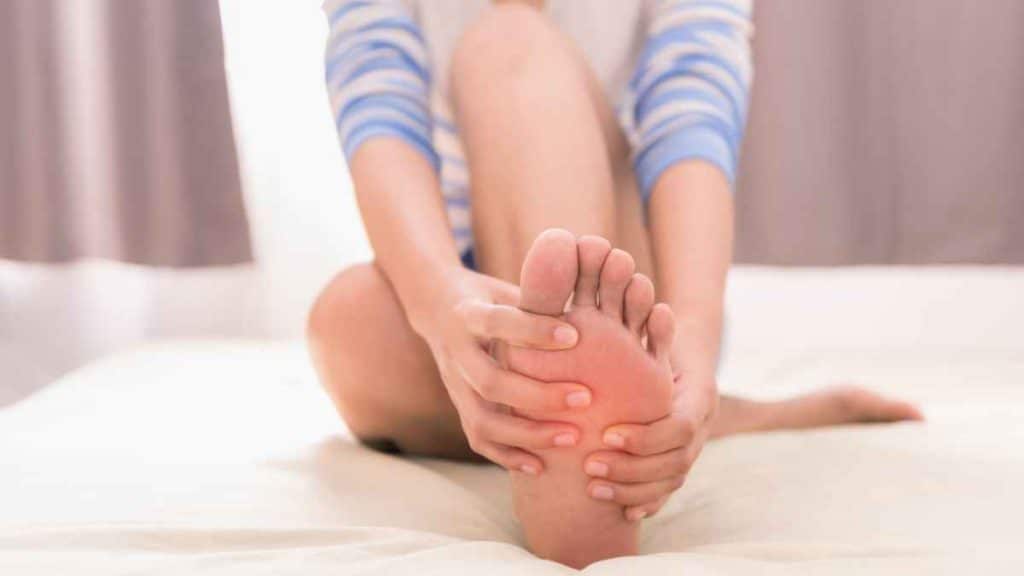Chronic pain can make it hard to work, look after yourself or do the things you enjoy. It is a complex condition that everyone experiences differently. Therefore, pain relief can look different for everyone; in fact the process is often trial and error until you find coping mechanisms that work for you.
Here are some simple pain relief options to try out when you feel your pain is getting the best of you.
1. Back to basics check in
Eating and hydration
Eating a healthy diet that is high in anti-inflammatory foods such as lean protein and colourful fruits and vegetables keeps your body strong and helps boost your defences against pain. Ensuring you are drinking enough water to keep yourself hydrated is also a vital foundation. Asking your doctor what kind of diet best suits your health condition can help manage your pain.
Sleep
Studies have shown that disruptions to sleep may trigger chronic pain and that it can also increase your risk of developing depression, exacerbating pain. If you’re in the habit of reaching for a night cap before bed, it may mean you’re not going to get enough restorative, REM sleep. Try swapping an alcoholic beverage for a cup of tea or warm milk to set yourself up for a good night’s sleep.
2. Get moving
Chronic pain can keep you from being as active as you should be, though when you don’t exercise your muscles weaken and you may suffer from even more pain. Exercise releases endorphins which ease pain and boost your mood; even a short routine will release endorphins that reduce your perception of pain.
You should always consult with your doctor before starting any new exercise routine to ensure you’re partaking in activities that are appropriate for you. The key is to start slow and respect your body’s limits.
Some ideas to discuss with your doctor may include:
- Walking around your neighbourhood
- Water aerobics
- Clinical Pilates
- Gentle stretching exercises
3. Meditation
Mindfulness is about being present or ‘in the moment’. Taking the time to unplug or unwind your mind is a brilliant way to calm your whole body.
According to painHEALTH, “the current evidence suggests that mindfulness-based treatments are about as good as well-established psychological treatments for persistent pain.”
Closing your eyes and focusing on your breathing for even just 10 minutes does wonders to calm down your nervous system and regulate your blood pressure, which may translate to reduced pain. There are plenty of free resources online to help you get started if you’re new to mindfulness.
4. Keep a pain journal
Keeping track of your pain day to day can be an effective tool to help you and your doctor assess your symptoms, treatment and future course of action.
To help you get started, take note of your pain level each day, then list the activities you did and how you felt while doing them. This simple measure can track any potential pain triggers or inform you of any adjustments that may need to be made to your treatment.
5. Embrace distraction
Though it can be difficult not to, paying attention to your pain will probably make it worse. Distraction is a powerful technique that draws your attention away from your symptoms, so you may feel less pain. Plus, you can enjoy the pleasure of learning a new skill or gaining a new hobby at the same time.
Anything from joining a book club to taking a cooking class can introduce beneficial distraction into your life. Knitting or completing crosswords are less physically active ways to keep yourself distracted if other options aren’t viable.
Listening to music or engaging in music therapy can help reduce the intensity of your pain. Try listening to music around your house that you enjoy and makes you feel good.
Scheduling enjoyable activities will help you maintain a positive outlook and give you something else to focus on, decreasing the effects of pain signals in the body.
6. Reach out
Social support can be a great way to help you cope with chronic pain. Socialising improves mood, boosts wellbeing and offers a brilliant network of friends and family to support you.
If you’re unable to leave your home, invite others over to avoid isolating yourself. Educating yourself about your condition allows you to let those close to you know what you are going through and what they can do to help look out for you.
7. See a physiotherapist
If at-home treatments aren’t enough to help you properly manage your pain, a great option is to talk to your doctor about seeing a chronic pain physio. These qualified professionals support people with chronic pain to improve function, achieve their goals and enjoy a better quality of life.
According to the Australian Physiotherapy Association, “Movement helps the body heal and boosts the immune system, whereas avoiding healthy activities often leads to an increase of disability and further loss of well-being.” Though it may seem counter-intuitive, maintaining movement can be important for people suffering with chronic pain. Your local physiotherapist can help you build a physical activity plan tailored to your needs and set appropriate goals, making the experience as painless as possible.
How To Get Started
The treatment options that are best for you depend on several factors, including the type of pain you are experiencing and what caused it—so it is important to consult your doctor first.
Remember, there is hope and there is help, you just need to find what works for you.

